
This is a great lab to do with students during October while most grocery stores stock dry ice for Halloween! Explore sublimation in action!
- Subject:
- Chemistry
- Material Type:
- Activity/Lab
- Author:
- Elaine Ready
- Date Added:
- 10/23/2023

This is a great lab to do with students during October while most grocery stores stock dry ice for Halloween! Explore sublimation in action!
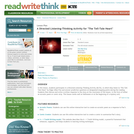
What's that sound? Students participate in a Directed Listening-Thinking Activity (DLTA) using "The Tell-Tale Heart," make predictions, and respond in the form of an acrostic poem or comic strip.

American Heritage, American Experience is the title of Module 12 of the ESL course. Lessons on American symbols, celebrations, school systems, states, capitals are among topics covered in this module. Discussions on the meaning of ‘heritage’ and assignments sharpen student awareness of the American culture. Prompts also urge students to compare and contrast their different native cultures to American culture.

Presumably you've already made plans for surviving a zombie apocalypse, but have you thought through the important economic factors that might make the difference between surviving and losing your brain to one of the walking dead? In this video, Professor Anthony Davies of Duquesne University discusses how a zombie apocalypse would affect the price of gasoline, the supply of money, and the economy as a whole.

Students will play a game listing as many vocabulary words as they can that are related to a certain topic.

Students will discuss Halloween in German. They will talk about their personal favorite sweets, costumes. They will play a game with German Halloween words on different Halloween topics.

Students discuss Halloween scary concepts, traditions, and plans. Student learn about Krampus.
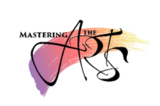
This resource was created by Sara Pittack, in collaboration with Lynn Bowder, as part of ESU2's Mastering the Arts project. This project is a four year initiative focused on integrating arts into the core curriculum through teacher education and experiential learning.

The goal of the lesson is to educate upper primary school students on the racist Halloween costumes present in today's society. Students will learn about where blackface originiated and how it contributes to the oppression of Black people all across the world. Students will learn using a Powerpoint and Kahoot!.
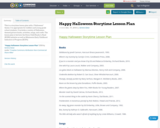
This is a storytime lesson plan with a "Halloween" theme. It is appropriate for toddlers and young grade school students. It includes a variety of Halloween-themed picture books, activities, songs, and crafts. The lesson plan is tied into the Every Child Ready to Read (ECRR) initiative as well as Minnesota Early Childhood Indicators of Progress (ECIPs).
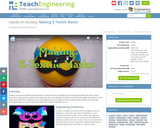
Students learn about engineering applications in artistic venues by designing and creating eye masks that each contain three LEDs. They explore parallel circuits with their LEDs, and sew with conductive thread to create light-up displays on their masks, gaining hands-on experience in using engineering technologies as well as custom product design and assembly.
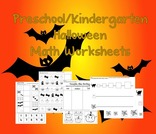
This resource was designed for preschool and kindergarten students to have paper/pencil practice and/or assessment for four early math skills: number to quantity (1-10), patterning (AB, AAB, ABB, ABC), sorting by size, and organizing by size.The South Carolina State Standards that are addressed by each activity are included on each worksheet.
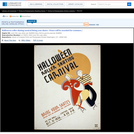
Poster announcing roller skating carnival in Central Park, New York City, showing a boy and a girl skating. Date stamped on verso: Oct 20 1936.
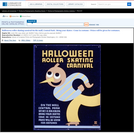
Poster announcing roller skating carnival in Central Park, New York City, showing a child roller skating with a jack-o-lantern mask. Date stamped on verso: Oct 20 1936. Posters of the WPA / Christopher DeNoon. Los Angeles : Wheatly Press, c1987, no. 188

Poster for the WPA Statewide Library Project, showing a boy reading a book, surrounded by a bat, ghost, witch, and other images of Halloween. Date stamped on verso: Aug 30 1940. Attributed to Albert M. Bender. Posters of the WPA / Christopher DeNoon. Los Angeles: Wheatly Press, c1987, no. 161
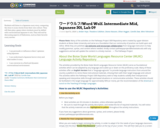
Students will listen to a Japanese scary story, comparing the story to scary stories from their own culture. They will then play a game where students must be skilled with conversational Japanese to win. They will end by discussing aspects of Halloween, such as their favorite scary movies.
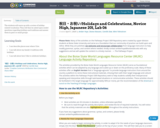
The students will warm up with a review of holiday-related vocabulary. They will then be asked open-ended questions regarding holidays and traditions and answer them in pairs or small groups
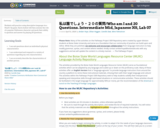
Students will practice using descriptive language via a Head’s Up game. Each student will then assume the role of a popular Halloween character and push their ability to question and answer by playing 20 questions.